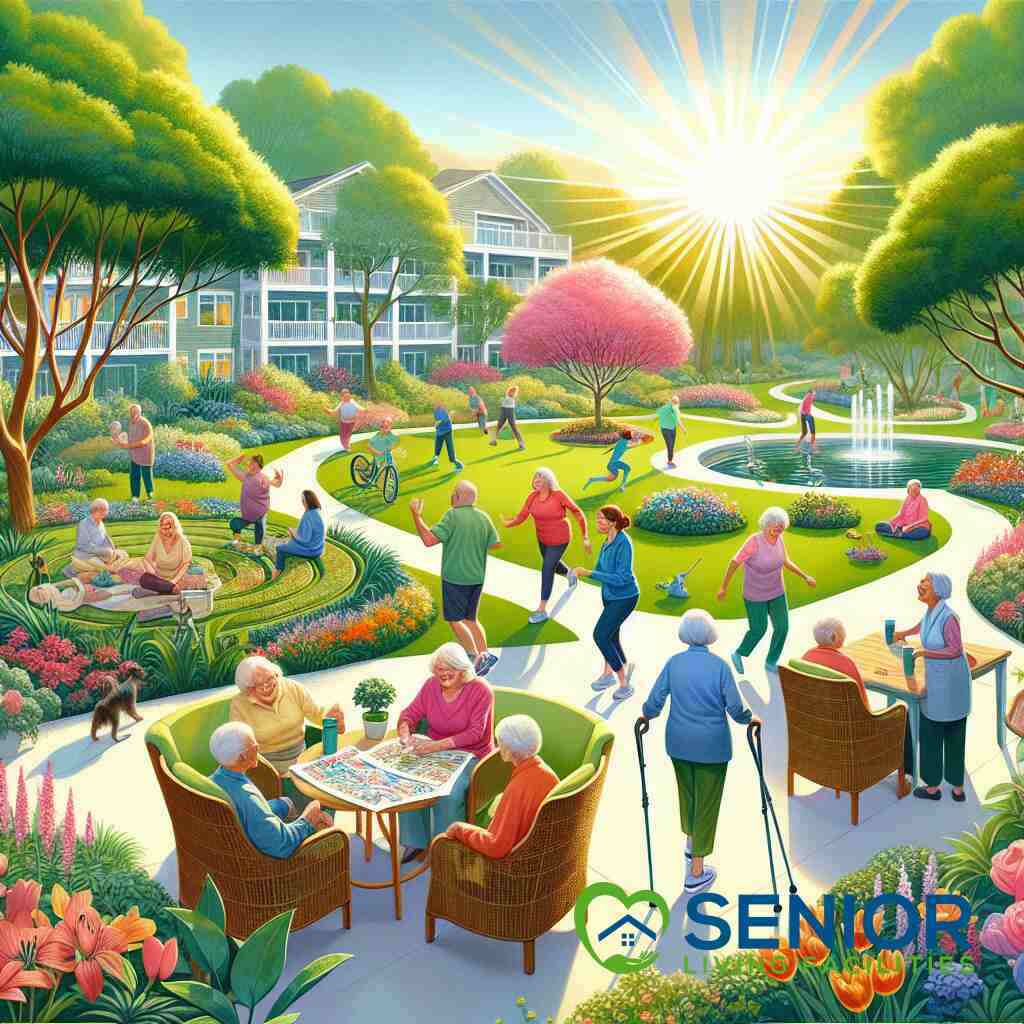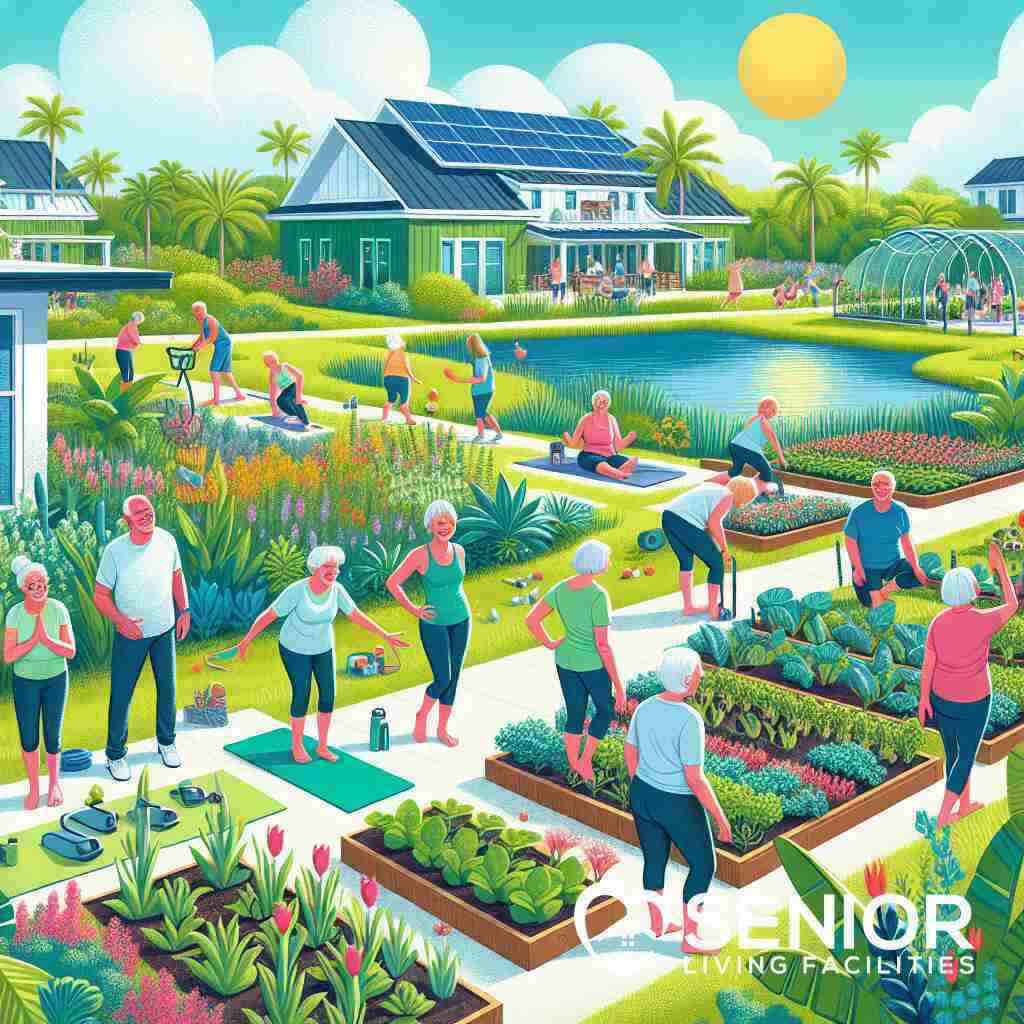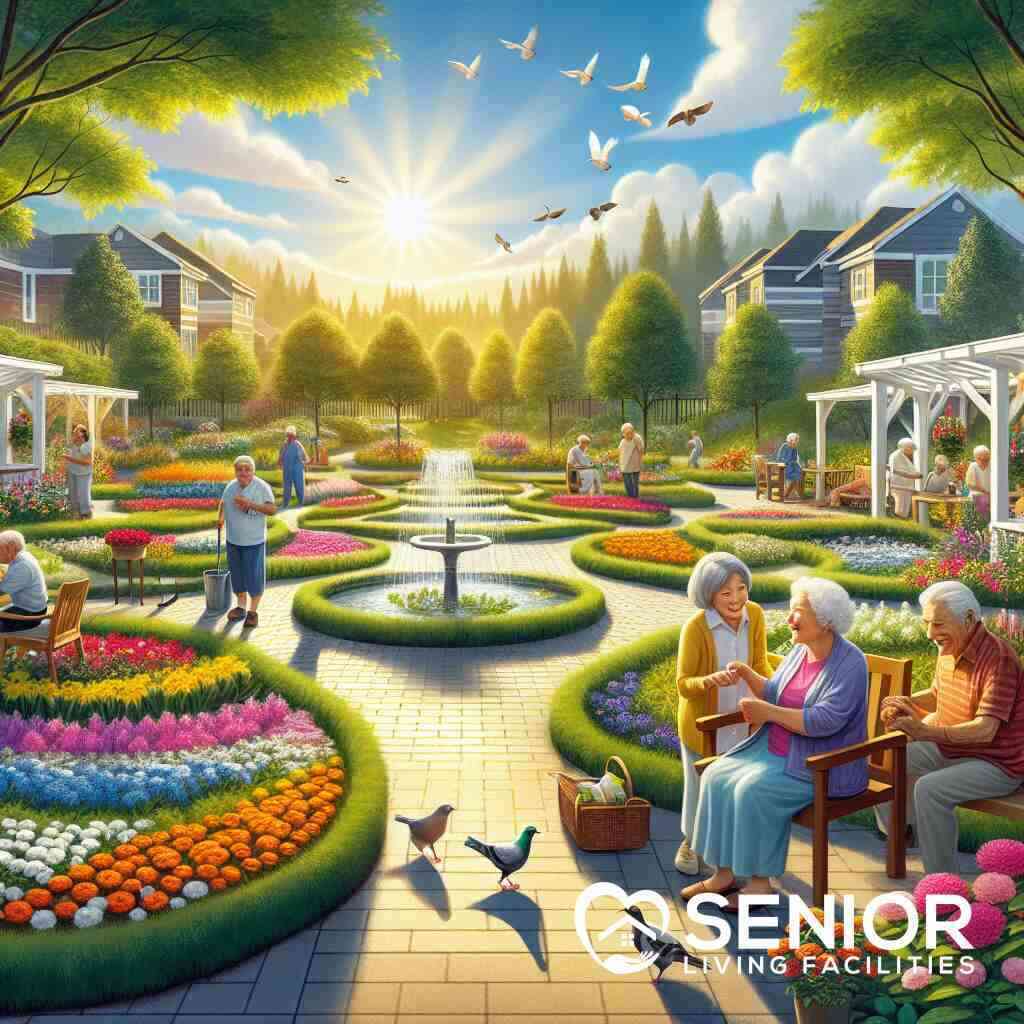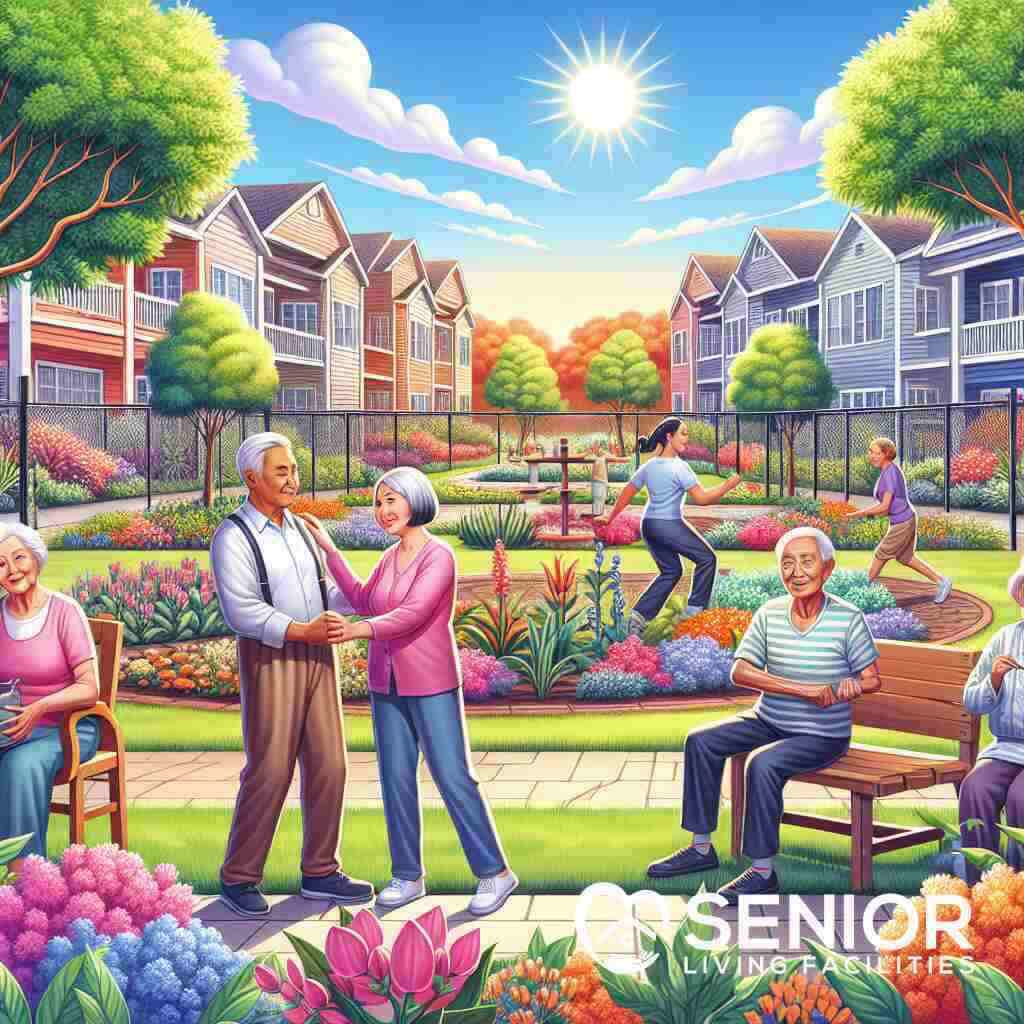
Exploring the Definition of Housing Options for Seniors
June 19, 2025
Introduction: Unveiling the Diverse Landscape of Senior Housing
The Evolving Needs of an Aging Population
The U.S. is experiencing a significant demographic shift as the aging population grows rapidly. With the increasing number of older adults, their housing needs are becoming more diverse and complex. It’s crucial to recognize this evolution to provide suitable senior living facilities that cater to varying needs. Factors such as healthcare requirements, lifestyle preferences, and social integration play an essential role in shaping these living arrangements. This necessitates a dynamic approach to redefining housing for seniors, ensuring it aligns with their evolving needs and expectations.
A Glimpse into the Future of Senior Housing Options
As we forge ahead, senior housing options are expanding beyond conventional boundaries. The future promises innovative solutions that blend technology with personalized care. From aging-friendly housing design to adaptive environments, the landscape is being transformed by innovative longevity solutions. These changes cater to seniors’ desires for independence and community, ensuring a fulfilling lifestyle. Such transformations are vital in preparing for the next generation of seniors, who will demand flexibility and enhanced living experiences.
Why Understanding Housing Options for Seniors Matters
A profound understanding of housing options for seniors is imperative for several reasons. It empowers individuals and families to make informed decisions, aligning choices with personal and health needs. Furthermore, acknowledging multigenerational living solutions ensures that diverse living preferences are considered. This knowledge not only improves individual satisfaction but also enhances community well-being. Recognizing the critical aspects of senior living options fosters a culture of compassion and inclusion, paving the way for more robust and adaptable senior housing facilities.
The Spectrum of Senior Housing: Beyond Traditional Choices
From Senior Apartments to Continuum of Care Retirement Communities
Navigating the spectrum of senior housing options begins with understanding the diverse choices available, ranging from senior apartments to continuum of care retirement communities. These options cater to varying levels of independence and care requirements, providing seniors with opportunities to age gracefully within supportive environments. Senior apartments often serve as the first step, offering an independent lifestyle with minimal assistance. In contrast, continuum of care communities provide a seamless transition through different stages of required support, ensuring that residents receive personalized care as their needs change. This flexibility is crucial in fostering a sense of security and well-being among older adults, allowing them to thrive in their chosen communities.
Selecting the right housing solution involves evaluating an individual’s preferences, health needs, and future plans. As seniors aspire to maintain autonomy, a major allure of senior apartments lies in promoting community engagement while onboarding residents into a low-maintenance lifestyle. On the other end, continuum of care facilities offer a comprehensive solution by integrating independent living, assisted living, and skilled nursing care within a single community. Empowering seniors with these varied choices allows them to remain in familiar surroundings, continually supported by seasoned caregivers and healthcare professionals.
Exploring Independent Living Choices for Active Adult Lifestyles
Independent living is ideal for active adults seeking an enriched lifestyle brimming with social activities, wellness programs, and extended learning opportunities. These communities, often referred to as 55+ residential communities, preserve a sense of autonomy while fostering an engaging social environment. Facilities like recreation centers, gyms, and clubhouses are common, encouraging a vibrant, communal lifestyle that resonates with active adult preferences. The pursuit of an invigorating lifestyle aligns with the aspiration to remain purposeful, engaged, and connected.
For individuals searching for guidance, a comprehensive independent senior living guide can be invaluable. Such guides provide insight into what future residents can expect in terms of amenities, lifestyle choices, and community infrastructure. They empower seniors to seamlessly transition into lifestyles they envision for their retirement, ensuring that their choices align with personal goals, interests, and health maintenance strategies.
Delving into Assisted Living Alternatives for Advanced Senior Care
As seniors’ needs become more pronounced, assisted living alternatives play a critical role in ensuring continued care while nurturing independence. Facilities dedicated to advanced senior care provide personalized support, addressing everyday challenges that seniors may face. This includes assistance with daily activities such as bathing, dressing, medication management, and mobility support. The aim is to alleviate daily stressors while maintaining autonomy and dignity.
In-depth assisted living blog insights expand on the nuances of assisted living, fostering a better understanding of services offered, caregiver expertise, and community lifestyle. Effective solutions integrate memory care units for residents facing cognitive challenges, ensuring their safety and improving quality of life. By offering an accommodating yet empowering environment, these facilities enable individuals to focus on their well-being, form strong social connections, and enjoy a higher quality of life.
Innovative Aging in Place Solutions for Geriatric Accommodation
For seniors who wish to remain within the comfort of their own homes, innovative aging in place solutions offer a compelling alternative. These solutions emphasize modifications that enhance safety, accessibility, and comfort, ensuring that homes are conducive to prolonged residency as mobility and health needs evolve. Innovations such as adaptive equipment, technology-driven home automation, and medical alert systems facilitate independent living while providing peace of mind for families.
The concept of geriatric accommodation extends beyond architectural maneuvers. It involves community-based services offering nutritional support, transportation, and health assessments, strengthening the foundation of aging in place. Moreover, senior housing facilities provide a valuable platform to explore these services, ensuring informed decision-making that aligns with financial capacity and lifestyle planning. By tailoring home environments to match individual needs, seniors are better equipped to enjoy their golden years with autonomy and fulfillment.

Designing Spaces: Crafting Environments for Aging-Friendly Living
Adaptive Senior Environments: Beyond Conventional Design
The modern approach to designing senior living environments transcends traditional architecture, embracing adaptive designs that cater to an aging population’s specific needs. Achieving this requires a blend of functionality, safety, and aesthetics, ensuring that spaces are not only usable but also comforting. Integrating adaptive senior care technologies within these living spaces is pivotal. These technologies facilitate daily activities and promote independence for seniors, providing them with innovative longevity solutions.
Senior housing facilities are increasingly recognizing the importance of adaptable designs, focusing on creating vibrant, responsive environments. This includes facilitating seamless mobility with features like non-slip flooring and widened doorways. Furthermore, smart home devices enhance convenience by automating lighting and temperature controls, thus supporting an adaptive lifestyle. Such forward-thinking solutions are instrumental in cultivating secure and enjoyable living conditions for older adults.
Creating Geriatric Living Spaces with Accessibility in Mind
In planning geriatric living spaces, accessibility plays a crucial role in ensuring safety and independence for older adults. Developers are paying special attention to accessibility in senior apartments by incorporating design elements such as grab bars, step-free entrances, and adjustable countertops. These modifications enable seniors to navigate their homes comfortably, reducing risks associated with movement restrictions.
Healthcare professionals emphasize the significance of accessible living arrangements, which have been correlated with improved health outcomes and quality of life. By tailoring environments to accommodate physical limitations, seniors are empowered to lead fulfilling, independent lives. Thus, accessibility-focused designs not only enhance daily living but also contribute to the overall mental and emotional well-being of the elderly, reinforcing their ability to age in place gracefully.
Multigenerational Living Options: Bridging Generations Under One Roof
Multigenerational living arrangements provide a unique opportunity for families to foster close-knit relationships while respecting individual autonomy. These living solutions promote the concept of diverse age groups cohabiting, offering mutual support. This approach not only bridges generational gaps but also enhances social connectedness. Collaborative living spaces accommodate varied needs through flexible configurations, ensuring privacy and communal areas coalesce seamlessly.
The increasing popularity of multigenerational housing reflects evolving societal norms, favoring inclusive environments that prioritize family values. This model demonstrates economic advantages by pooling resources to manage living costs and caregiving duties. Additionally, such environments cultivate reciprocal learning and emotional support, creating robust community bonds. By advancing retirement community options in Alabama, companies can tailor spaces that cater to multigenerational dynamics, fostering inclusive and vibrant communities.
The Emergence of Senior Co-Housing Arrangements
Senior co-housing arrangements are emerging as a revolutionary living option, designed to fulfill the aspirations of community-oriented seniors. These collaborative living setups emphasize shared spaces while promoting independence among residents. Living arrangements incorporate individual apartments alongside communal facilities, thereby facilitating social interaction and resource sharing.
This communal lifestyle offers an alternative to traditional housing, prioritizing active engagement and mutual support among residents. By embracing senior co-housing concepts, individuals can create supportive networks, reducing loneliness and fostering community resilience. Such environments encourage seniors to engage in activities that cater to collective interests, ensuring a fulfilling retirement experience. Senior co-housing exemplifies a forward-thinking approach, advocating for both autonomy and social integration.
Community and Connection: Building Meaningful Living Experiences
Age-Restricted Living Communities: Balancing Privacy and Engagement
Age-restricted living communities offer a vibrant setting where individuals aged 55 and above can thrive through a blend of independence and community interaction. These 55+ residential communities are designed to balance privacy with social opportunities, catering to the needs and preferences of active adults. Residents can enjoy shared amenities such as pools, fitness centers, and organized events, fostering a sense of community while allowing personal space. As an example, exploring senior living in Arizona offers diverse options that prioritize senior comfort and engagement. These communities are structured to enhance the social experience without compromising personal freedom, ensuring that every senior can find a fulfilling space that caters to their lifestyle.
The importance of fostering connections within age-restricted communities is paramount, as it addresses potential feelings of social isolation. Events and group activities encourage interaction, promoting friendships and collaborations among residents. This engagement not only enriches the living experience but also contributes to improved mental health and longevity, highlighting the commitment of these communities to provide comprehensive wellbeing solutions. By focusing on the careful integration of social opportunities, age-restricted communities succeed in creating environments that are both engaging and nurturing.
Fostering an Elderly Community Lifestyle Through Social Design
Creating a thriving elderly community lifestyle requires intentional social design, which emphasizes interaction and mutual support among residents. This approach encourages the development of communal spaces that facilitate interaction, such as common dining areas, outdoor lounges, and shared gardens. By prioritizing these features, communities can bolster residents’ social lives, enhancing their overall quality of life. Senior living choices in Georgia exemplify the integration of social design by incorporating elements that facilitate interaction and connectivity.
Effective social design in senior living encourages a supportive atmosphere where residents can exchange skills, share stories, and foster friendships. It emphasizes the concept of “neighbors helping neighbors,” promoting a strong sense of belonging and community resilience. Additionally, by creating a framework that encourages diverse social interactions, these designs contribute to a holistic elderly lifestyle, ensuring that seniors remain active, engaged, and emotionally fulfilled.
Longevity Living Solutions: Designing for Health and Well-being
Designing living solutions that prioritize longevity is crucial for supporting health and well-being among seniors. These solutions encompass a range of factors, including safe living environments, access to healthcare services, and opportunities for physical and mental activity. A noteworthy example can be found in innovative longevity solutions, which emphasize creating spaces that enhance the overall health of older adults.
Longevity-focused designs not only cater to physical health but also concentrate on mental and emotional well-being. Incorporating elements such as wellness programs, mental health initiatives, and recreational activities can profoundly impact the quality of life for seniors. These solutions encourage a proactive approach to health, advocating for environments that are conducive to maintaining independence and promoting a high standard of living. By prioritizing comprehensive health aspects, longevity living solutions ensure that senior citizens can enjoy fulfilling and healthy lives.
Retiree Housing Plans: Secure, Comfortable, and Connected
Retiree housing plans aim to provide seniors with secure, comfortable, and connected living arrangements tailored to their individual needs. These plans often include features such as communal opportunities, medical support, and safety measures that address the diverse requirements of aging populations. By focusing on creating supportive environments, these plans ensure that retirees can lead worry-free lifestyles.
To achieve these goals, housing plans for retirees prioritize safety and accessibility, incorporating design elements such as emergency call systems, grab bars, and other safety measures. Furthermore, connectivity through transportation services and local activities ensures that retirees remain engaged with their communities. For instance, retirement communities in Florida embody these principles by offering seniors a wide array of services that promote comfort and connectivity. By focusing on these key aspects, retiree housing plans not only secure the physical well-being of seniors but also promote their social inclusion, empowering them to lead fulfilling and independent lives.
Future Trends: Innovations Shaping the Next Era of Senior Living
Eldercare Innovations for Tomorrow’s Housing Markets
Eldercare innovations are paving the way for groundbreaking changes in tomorrow’s housing markets. As the needs of seniors evolve, so does the necessity for adaptive solutions. Emerging technologies and design principles are focused on enhancing the quality of life for seniors. These innovations include smart home technology, which ensures safety and convenience, and assistive devices that promote independence. Additionally, the integration of health monitoring systems is proving crucial, offering real-time insights into residents’ well-being. This forward-thinking approach not only supports immediate needs but also anticipates future challenges in senior housing, presenting a proactive model that redefines eldercare expectations.
Seniors are increasingly benefiting from these innovations, finding that their living environments can adapt to their changing requirements. In fact, the concept of eldercare innovations extends beyond technology, encompassing community-driven initiatives that focus on holistic well-being. As a result, these advances provide a comprehensive framework for future senior housing, ensuring that all aspects of aging-physical, emotional, and social-are addressed. These innovations form the backbone of strategic initiatives aimed at reshaping senior living, ensuring a harmonized blend of comfort, security, and engagement.
Smart Technologies Transforming Senior Residential Facilities
Smart technologies are significantly transforming senior residential facilities, offering a new realm of possibilities for enhanced living. The implementation of smart home devices and Internet of Things (IoT) technologies in senior housing is facilitating better management of daily activities. These innovations include voice-activated assistants, automated lighting systems, and advanced medical alert devices that enhance safety and convenience. Additionally, smart technologies are fostering seamless communication channels between caregivers and family members, ensuring that seniors receive attentive care while maintaining independence.
Given the rising importance of these technologies, senior residential facilities are evolving into hubs of innovation, prioritizing safety and connectivity. By adopting smart technologies, these facilities are also enabling seniors to engage with their surroundings actively, enhancing their quality of life. Residents can now enjoy an enriched lifestyle, where mundane tasks are automated, freeing them to focus on social interaction and personal well-being. This transformative shift in senior housing underscores the vital role technology plays in crafting a vibrant and supportive living environment.
The Role of Personalization in Customized Senior Housing Plans
Personalization is becoming a cornerstone in developing customized senior housing plans that address the unique needs of each individual. In an era where one-size-fits-all solutions are no longer viable, personalization ensures that housing options align with personal preferences and health requirements. This trend is evident in the rising popularity of customized living arrangements that cater to varied lifestyles. Personalization extends beyond physical adaptations, incorporating tailored social programs and healthcare services that resonate with residents’ values and interests.
The move towards personalized senior housing is indicative of a broader industry trend that emphasizes resident-centric care. Providers are increasingly recognizing the importance of tailoring living environments to better reflect individual choices, enhancing satisfaction, and quality of life. Consequently, this approach fosters a deep sense of belonging and community, as seniors are empowered to shape their living spaces. Personalization not only meets current demands but also anticipates future needs, offering adaptive solutions geared towards lifelong fulfillment.
Collaborative Efforts in Developing Senior Independent Living Choices
Collaborative efforts are crucial in developing diverse senior independent living choices, emphasizing partnership among stakeholders. These collaborations involve healthcare providers, technology developers, and community organizations to design comprehensive solutions tailored to senior lifestyles. By working together, these entities are better equipped to address the complex needs associated with aging, leading to innovative independent living options. Facilities focusing on senior lifestyle in New York are great examples of such initiatives, where community-driven solutions are implemented.
Partnerships in senior living foster an environment of continuous improvement and adaptation. By joining forces, stakeholders can leverage each other’s strengths, creating a synergistic effect that benefits residents. These joint efforts emphasize community engagement and active aging, ensuring that seniors remain connected and empowered. Moreover, such collaborations pave the way for sustainable developments that cater to evolving trends, facilitating the advancement of independent living options for future generations.
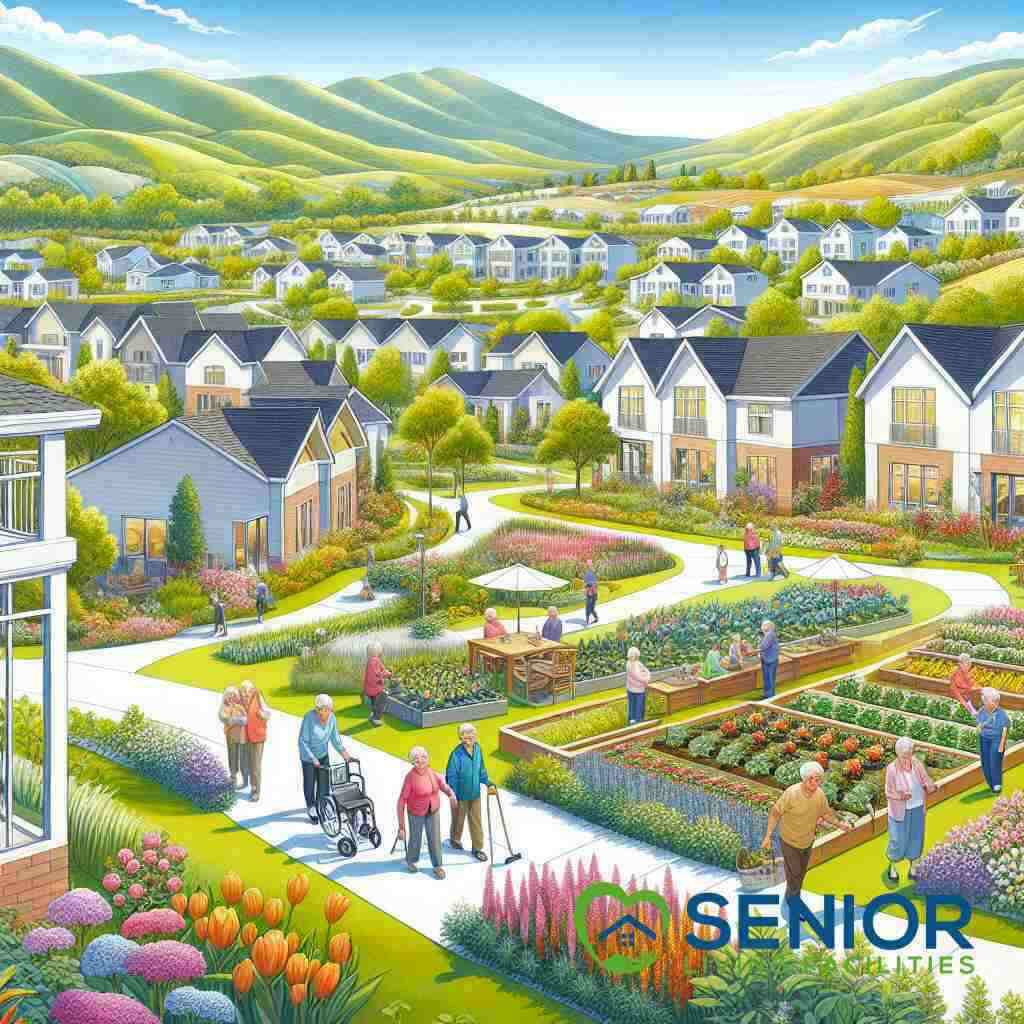
Conclusion: Pioneering Pathways for the New Age of Senior Living
Taking Stock of Senior Housing Trends and Their Impact
As we conclude our exploration of senior housing options, it is crucial to take stock of the evolving trends that are reshaping the senior living landscape. The integration of technology, the emphasis on personalization, and the rise of multigenerational living arrangements highlight a shift toward more adaptable and inclusive environments. These trends have profound implications for seniors, offering them a wider range of options that cater to diverse preferences and needs. By understanding and embracing these changes, stakeholders can ensure that the quality of life for seniors is continually enhanced through innovative gerontology living innovations.
Senior Living Facilities have recognized these developments and remain committed to offering comprehensive resources that aid families and individuals in navigating these choices. By providing access to various living arrangements, they empower seniors to find housing solutions that align with their aspirations and well-being goals.
The Role of Community Engagement in Successful Aging
Community engagement is a cornerstone of successful aging, as it enables seniors to maintain social connections and a sense of belonging. Engaging in community activities and networks can significantly improve mental health and contribute to a longer, healthier life. Age-restricted communities and retirement environments have implemented social designs and organized events that encourage interaction and collaboration among residents. This emphasis on community not only counteracts loneliness but also fosters a sense of purpose and fulfillment in later years.
Moreover, Senior Living Facilities supports the development of environments where community engagement thrives, ensuring that seniors have access to robust social opportunities. Their dynamic platform facilitates connections between seniors and communities, creating pathways for enriched and supportive living experiences. To explore options in different regions, such as senior living choices in Georgia, families are guided towards optimal choices for their loved ones.
Charting the Course Ahead: Opportunities and Challenges in Senior Living
As we chart the course ahead, the senior living sector faces a mix of opportunities and challenges that demand thoughtful consideration and forward-thinking strategies. The potential of burgeoning technology, innovative lifestyle options, and evolving societal norms presents exciting prospects for enriching senior living experiences. However, these opportunities come with challenges such as ensuring affordability, accessibility, and quality of care across diverse demographics.
Efforts must focus on creating pathways that harmonize technological advancements with compassionate care, ensuring seniors feel empowered and supported. Collaborative efforts among developers, healthcare providers, and families can drive meaningful change, leading to sustainable solutions that prioritize seniors’ well-being. Senior Living Facilities is committed to pioneering pathways in this domain, using its vast network and expertise to facilitate transformative change across the senior housing landscape.
In synthesizing these insights, the journey towards redefining senior living is one of continuous adaptation and innovation. By embracing emerging trends and fostering inclusivity and engagement, we can pave the way for a future where seniors experience dignified, fulfilling, and connected lives.
Frequently Asked Questions
Question: How does exploring the definition of housing options for seniors help families make informed decisions?
Answer: Understanding housing options for seniors, as explored in our blog post ‘Exploring the Definition of Housing Options for Seniors’, is critical for empowering families to make informed decisions. At Senior Living Facilities, we provide a comprehensive guide to help you navigate the diverse spectrum of options available. This includes independent living, assisted living, and continuum of care retirement communities. By familiarizing yourself with these choices, you can align living arrangements with your loved one’s personal needs, lifestyle preferences, and health requirements, ensuring they receive the best possible care.
Question: What are the advantages of using Senior Living Facilities to find eldercare innovations and aging in place solutions?
Answer: Senior Living Facilities is dedicated to offering the latest eldercare innovations and aging in place solutions. We connect families with senior living options that integrate cutting-edge technology and adaptive environments to support independence and safety. Our expansive database allows you to compare facilities and services that offer smart home features, health monitoring, and community-based services, enhancing the living experience for older adults. By choosing our platform, you ensure that your loved one enjoys a fulfilling lifestyle with access to innovative geriatric accommodation solutions.
Question: What makes Senior Living Facilities a reliable choice for exploring retirement community living and senior co-housing arrangements?
Answer: Senior Living Facilities is your go-to resource for exploring diverse retirement community living and senior co-housing arrangements. Our platform showcases a wide range of options, from age-restricted communities for active adults to vibrant senior co-housing models that prioritize community interaction. With a commitment to catering to various lifestyle preferences, we ensure that seniors can find housing solutions that foster social connections and support their desire for autonomy and engagement. Our user-friendly search and compare features set the foundation for a seamless exploration experience, helping you connect with communities that resonate with the values and goals of your senior loved ones.
Question: How do Senior Living Facilities ensure that advanced senior care solutions are accessible to all seniors across the U.S.?
Answer: At Senior Living Facilities, we pride ourselves on providing access to advanced senior care solutions throughout all 50 states in the U.S. Our platform’s commitment to inclusivity and affordability ensures that every senior, regardless of location, can find a suitable living arrangement. We connect families with a broad array of senior residential facilities designed to accommodate varying needs, from independent living to skilled nursing care. By offering detailed information on care levels, amenities, and medical services, we guide families to make confident choices for their loved ones’ future.
Question: What insights does the blog provide on the emergence of multigenerational living options and their benefits?
Answer: Our blog ‘Exploring the Definition of Housing Options for Seniors’ delves into the growing trend of multigenerational living options and their benefits. Integrating multiple generations under one roof creates a supportive environment where family bonds are strengthened and resources are shared efficiently. Senior Living Facilities highlights communities that offer flexible living spaces, ensuring privacy while facilitating intergenerational interactions. By choosing multigenerational living, seniors can enjoy emotional support and social engagement, enhancing their overall quality of life while maintaining family connections. What Does Rental Housing for Seniors Entail in 2025
